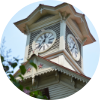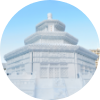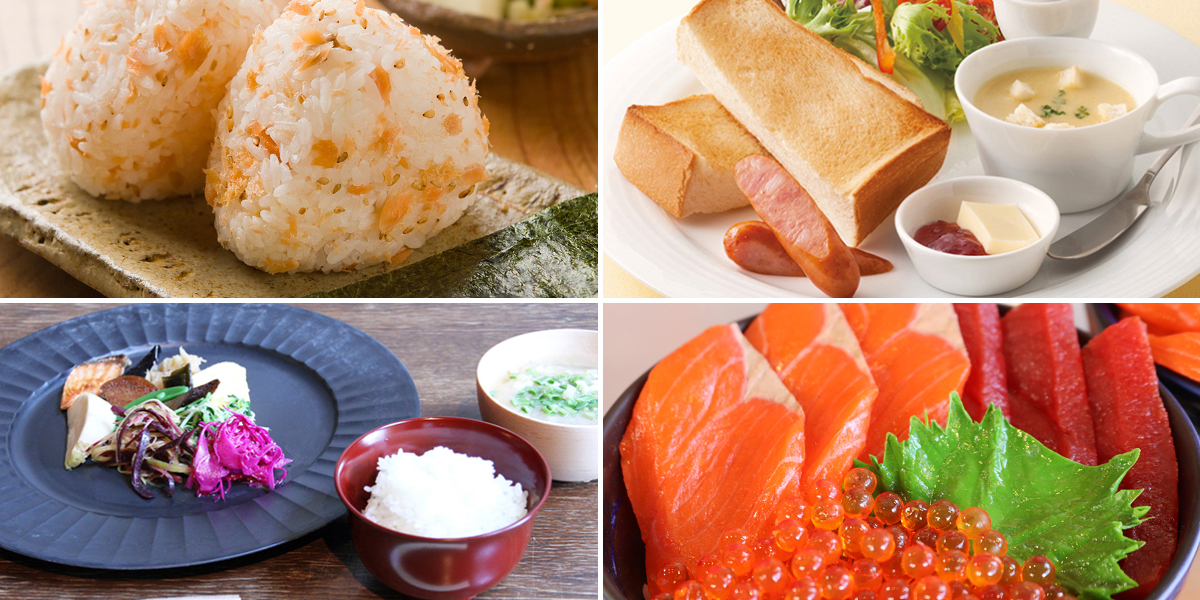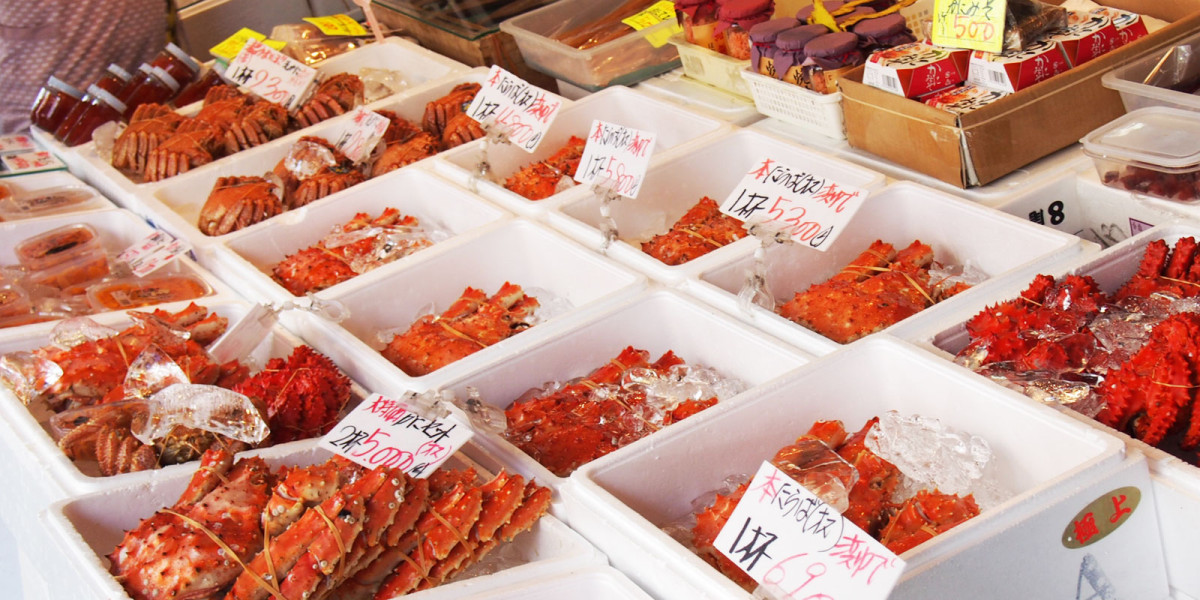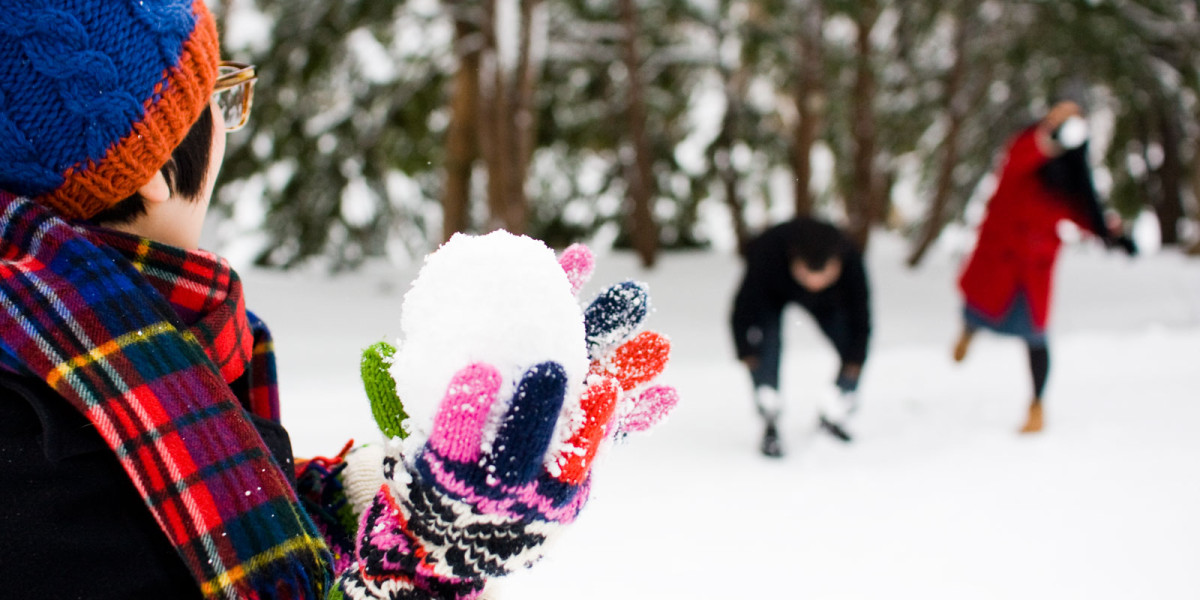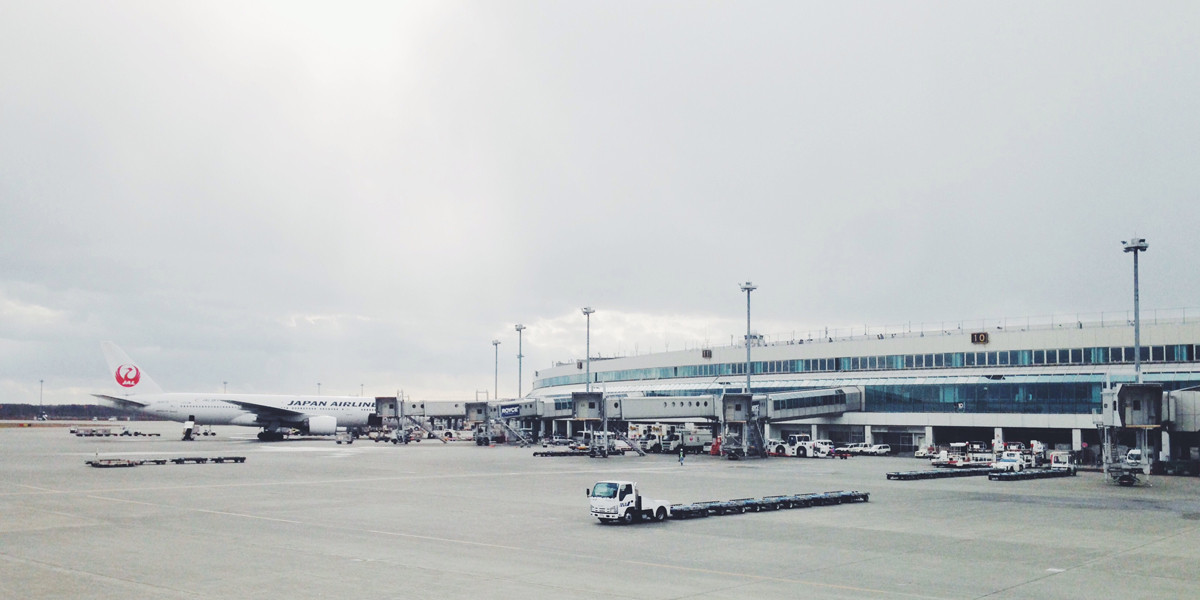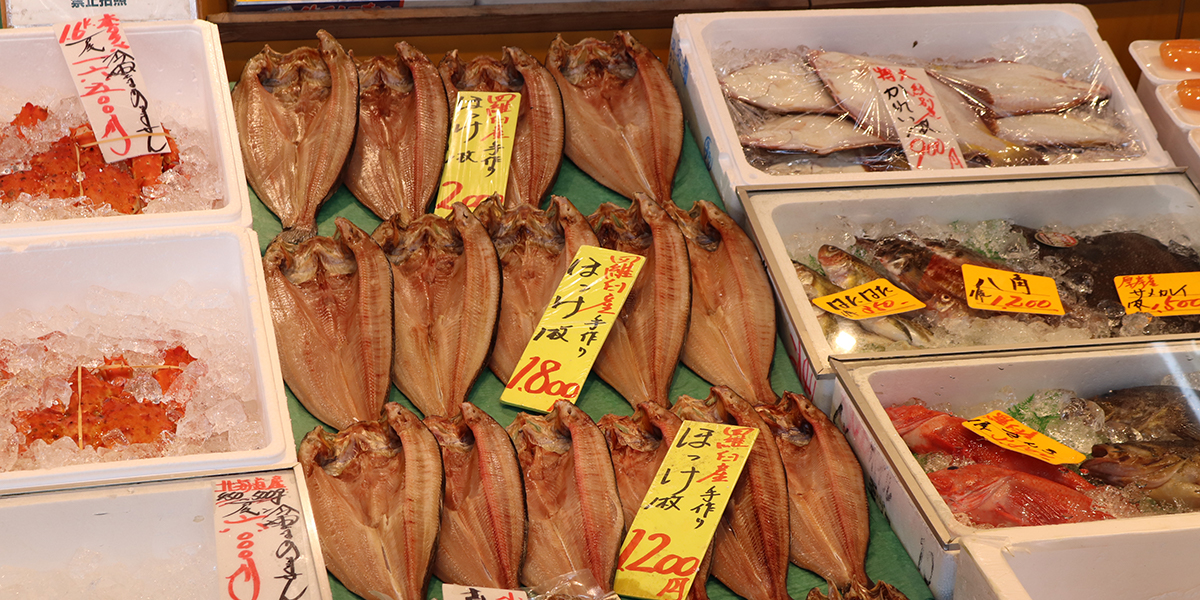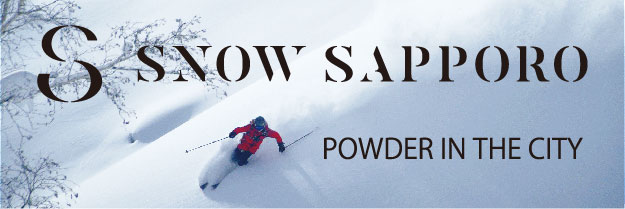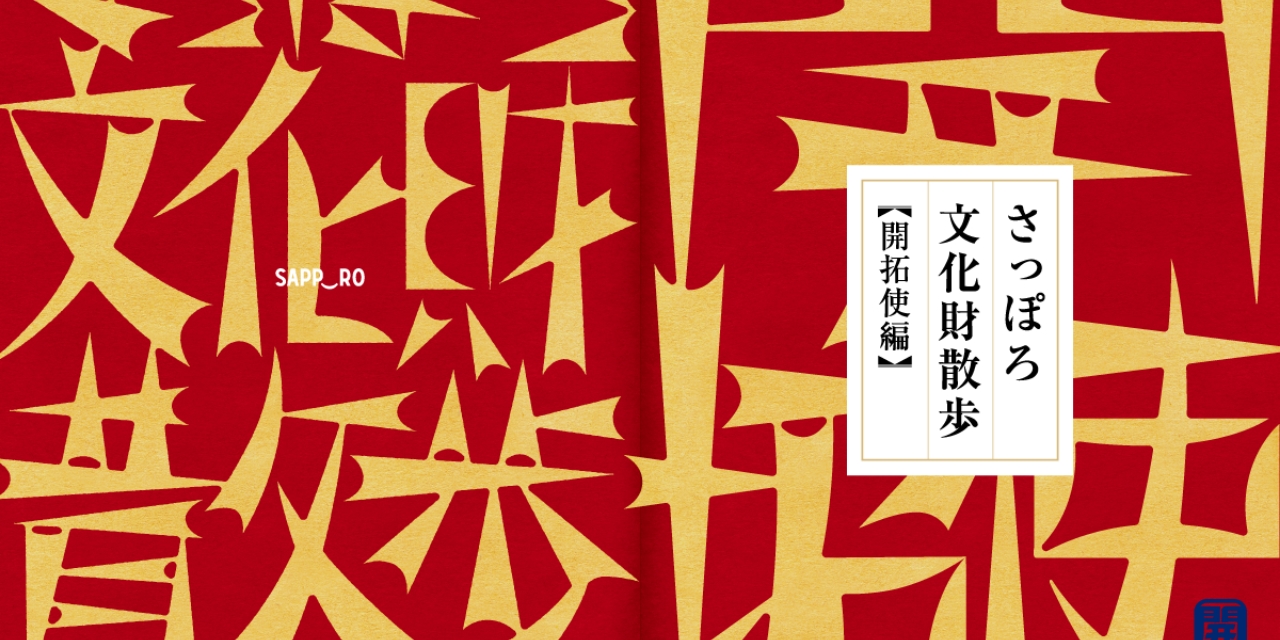
The Story of the Kaitakushi – The First Days of the Government The legacy of the Kaitakushi emerging ー Urban development and manufacturing in Sapporo ー
For Japan in the Meiji era, which aimed to become a modern nation, it was extremely important to develop Hokkaido and promote domestic industries using its resources.The Kaitakushi was the government agency established for that purpose.When walking around the city center of Sapporo, you can see a group of buildings that played an important role in the early development of modernization.
Why was the Kaitakushi established in Hokkaido?
The Meiji government worked on modernization and industrial promotion to protect independence from the Western powers.Hokkaido was an important location for defense against southward-expanding Russia. As well, developing Hokkaido’s abundant resources aligned with Japan’s national goal to be reborn as a modern nation.The government agency established for the development of Hokkaido between July 1869 (Meiji era 2) and 1882 (Meiji era 15) is called the “Kaitakushi”.The development of Hokkaido was a significant national project.
Hokkaido’s climate and land conditions differs from those south of mainland Japan.The United States, which once had similar conditions and experienced large-scale development, was sought as a model.The Commissioner of Agriculture in the United States Federal Government, Horace Capron, was invited as an advisor to the Kaitakushi by the Deputy Governor of Hokkaido Development, Kuroda Kiyotaka.Capron led many foreign technical specialists called “Oyatoi gaikokujin” to work on various surveys for underground resources, inspections, road construction, and industrial promotion initiatives.There were 78 experts on that list, including names like: William Smith Clark, the head of the Sapporo Agricultural College, Benjamin Smith Lyman, a geological engineer, Lewis Bemis, who was involved in fruit cultivation, and Edwin Dun, who was involved in dairy and livestock farming.The Kaitakushi actively incorporated modern technology while discerning the unique characteristics of Hokkaido’s nature.The main office building of the Kaitakushi was on the site of the current former Hokkaido Government Office Building (the Red Brick Office Building) and remains as a historic site called the “Kaitakushi Sapporo Main Office Building Site”.
-

Kaitakushi Sapporo Honchou Honchousha-ato (Remains of the Main Office Building). -

William Smith Clark
(held by the Hokkaido University Library)
The industrial zone was established on the east side of the Sosei River.
On the east side of the Sosei River (Otomobori) in Hokkaido, a group of factories were developed for industries such as lumber, woodworking, horse gear, casting, milling, netting, textiles, silk spinning, sugar refining, and soy sauce and miso brewing. Overseeing these factories were departments under the Hokkaido Development Commission, which later became the Industrial Bureau, Product Bureau, and Civil Affairs Bureau, in 1872 (Meiji era 5).Those factories were powered not only by waterwheels but also by state-of-the-art steam engines.The planning was based on the convenience of river transportation over the Sosei River and the availability of the Toyohira River’s flowing water for industrial use.
In 1876(Meiji era 9), a beer brewery (which later became the Sapporo Beer factory built on the same site) was established along North 3rd Street in Sapporo.The former feudal retainer of Satsuma, Hisanari Murahashi, who was in charge of the project, insisted on and oversaw the construction in Sapporo instead of Tokyo.This is because the brewing techniques that the brewer, Seihei Nakagawa, learned while in Germany that the cold-fermentation method relied heavily on large quantities of natural ice and a cool climate for success.
In the same year, the Sapporo Agricultural College (now known as Hokkaido University) also opened.After graduation, a certain period of service in the Kaitakushi was mandatory, and excellent graduates who learned modern technology played an active role in the agriculture and civil engineering fields.The Sapporo Agricultural College’s martial arts practice hall is now the current Clock Tower today.
Flax, hops, apples, grapes, strawberries, and other crops were also experimentally cultivated in the government gardens and around the main office building.
-

Brewery (Held by the Hokkaido University Library). -

Former Sapporo Agricultural College Martial Arts Practice Hall (Clock Tower)
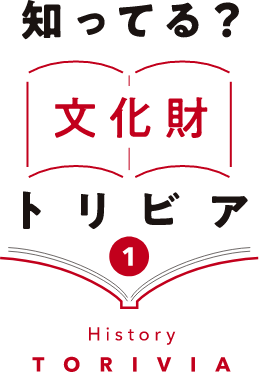
Similar ceiling centerpieces
The Hoheikan, Seikatei, and Former Nagayama Takeshiro Residence were built during the same period as the Meiji era.All of these buildings have relief decorations made of plaster called “ceiling centerpieces” in their Western-style rooms.These were created by artisans with advanced traditional skills.If you look closely, each one also has its own distinctive features, so it might be worth comparing them.
-
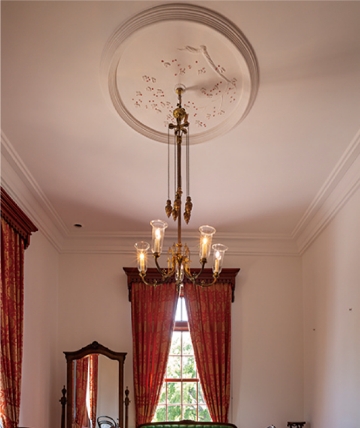
Hoheikan -
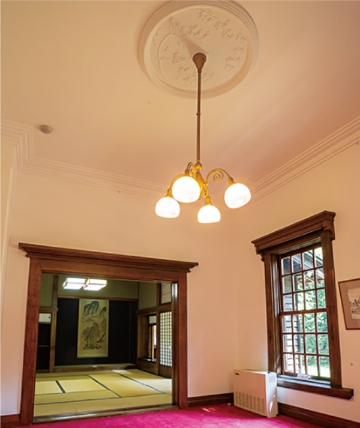
Former Takeshiro Nagayama Residence -
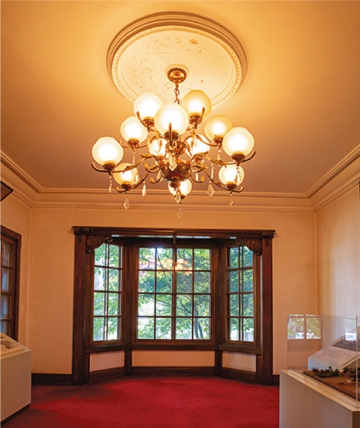
Seikatei
“Tondenhei” who worked as both farmers and soldiers
The “Tondenhei” system was adopted to settle immigrants and strengthen the defense of the north.During peacetime, they engaged in farming and land development. Military training at that time was mandatory so that people could become soldiers if and when necessary.North 3rd Street is also the path that Takeshiro Nagayama, known as the father of the Tondenhei, rode his horse from his residence to the Kaitakushi Sapporo Headquarters.
The symbol of the Kaitakushi is a red five-pointed star (called the Goryo Star).The symbol is still prominent on buildings with connections to the Kaitakushi, such as the Clock Tower, Hoheikan, and Seikatei.A salmon breeding project was also conducted using spring water from the pond next to Seikatei.Sapporo, where the legacy of the “Kaitakushi” can be seen in many places.Walking through this city, you can feel the aspirations of our predecessors who devoted themselves to the construction of a modern nation.
-

North 3rd Street -

Former Nagayama Takeshiro Residence
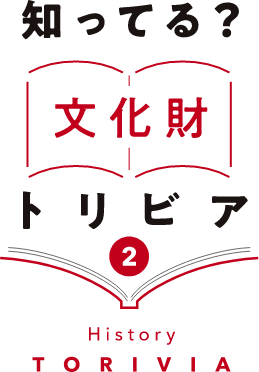
Let’s count the stars.
The symbol of the Kaitakushi, the “Goryo Star”.The emblem of the star can be found on buildings associated with the Kaitakushi, such as the Clock Tower, Hoheikan, and Seikatei.For example, there are 17 stars on the Clock Tower.Counting the stars on various buildings can also be one way to enjoy the city.
-
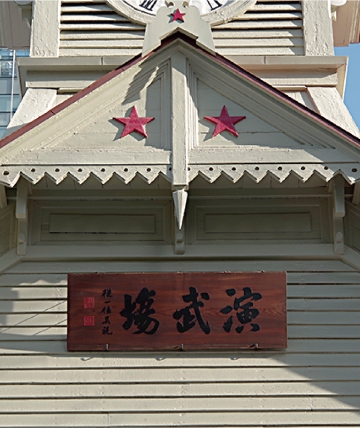
Clock tower -
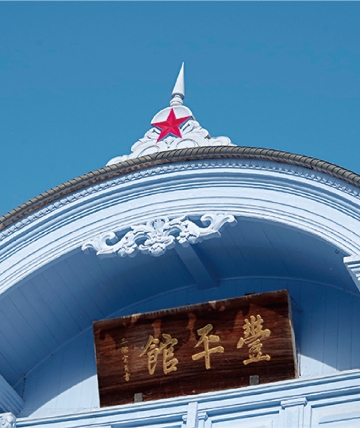
Hoheikan -
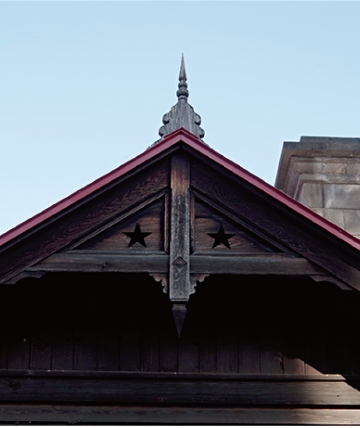
Seikatei
| Name of the cultural property | Status of Designation | Location |
|---|---|---|
| Edwin Dun Memorial Museum | Nationally Registered Tangible Cultural Property, Sapporo Landscape Asset (No. 20), Sapporo Furusato Culture 100 Selections (Buildings) No. 42. | 1-Chōme-6-1 Makomanaiizumimachi, Minami Ward |
| Former Hokkaido Government Office Building (Red Brick Office) | Nationally Designated Important Cultural Property, Nationally Designated Historic Site. | North 2-3 West 5-6, Chuo Ward |
| Building Site of the Former Hokkaido Development Commission Sapporo Headquarters and Former Hokkaido Government Office Building | Nationally Designated Historic Site | North 2-3 West 5-6, Chuo Ward |
| Monument of Soen | Not designated | “16 Chome Kita 1 Jonishi Chuo Ward” |
| Sosei River | Sapporo Furusato Culture 100 Selections (Street Scenery) No. 85 | Chuo Ward Kita Ward Higashi Ward |
| Sosei Bridge | Sapporo Furusato Culture 100 Selections (Street Scenery) No. 85 | South 1 West 1 to East 1, Chuo Ward |
| Toyohira River | Not designated | Minami Ward Toyohira Ward Chuo Ward Shiroishi Ward Higashi Ward |
| North 3rd street | Sapporo Furusato Culture 100 Selections (Street Scenery) No. 77(Brick pavement and ginkgo trees along the side of the road). | Chuo Ward, Kita 2 Jonishi, 4 Chome,Kita 3-jo Plaza(Sapporo Furusato Culture 100 Selections Designated Area) |
| Former Sapporo Beer Factory (Sapporo Factory) | Sapporo Furusato Culture 100 Selections (Buildings) No. 1 | North 2 East 4-5, Chuo Ward |
| Former Sapporo Agricultural College and Dr. Clark. | Sapporo Furusato Culture 100 Selections (Ruins) No. 53 | Kita-ku Kita 9 Nishi 7, Hokkaido University |
| Former Sapporo Agricultural College Martial Arts Practice Hall (Clock Tower) | Nationally Designated Important Cultural Property | North 1 West 2, Chuo Ward |
| Former Kaitakushi Industrial Agency Building. | Nationally Designated Important Cultural Property | Konopporo-50-1 Atsubetsucho, Atsubetsu Ward, The Historical Village of Hokkaido |
| Former Takeshiro Nagayama Residence | Hokkaido Designated Tangible Cultural Property | 2 Chome-6, Kita 2 Jonishi, Chuo Ward |
| Hoheikan | Nationally Designated Important Cultural Property | 1-20 Nakajima Koen, Chuo Ward |
| Seikatei | City Designated Tangible Cultural Property | Kita-ku, Kita 7 Nishi 7 |
| Kairakuen Garden site | Sapporo Furusato Culture 100 Selections (Ruins) No. 55 | 7 Chome Kita 7 Jonishi, Kita Ward Kairakuen Ryokuchi |
| Sapporo Beer Museum | Sapporo Furusato Culture 100 Selections (Buildings) No. 33 | “9 Chome Kita 7 Johigashi Higashi Ward” |
*Some of the above lists are not open to the public.
*Western-style buildings such as the Clock Tower, Hoheikan, and Seikatei, which convey the achievements of the Kaitakushi and reflect the spirit of Hokkaido, are designated as Hokkaido Heritage locations under the title of “Western-style architecture of the Kaitakushi period”.
Check out all the cultural properties in the story!
-
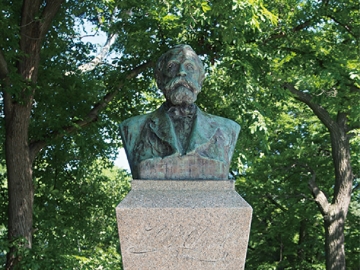
Former Sapporo Agricultural College and Dr. Clark
Hokkaido University’s predecessor, Sapporo Agricultural College, was established in 1876 (Meiji 9) with the aim of developing human resources for the development of Hokkaido.
It was built in 1878 (Meiji 11) as a facility of the Sapporo Agricultural College based on the vision of Dr. Clark, the first vice principal.
A bronze statue of Dr. Clark quietly stands in front of the Furukawa Hall on the campus.
The statue located at the Hitsujigaoka Observatory Deck gives a unique inspirational atmosphere.
Kita-ku Kita 9 Nishi 7, On the Hokkaido University
-
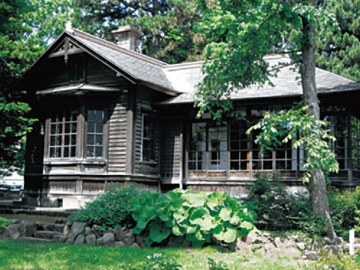
Seikatei
Seikatei was built in 1880 (Meiji 13) as a resting place for Emperor Meiji during his visit to Hokkaido.
The overall design is a Western-style structure with a harmonious blend of Japanese styles throughout.
While other buildings from the same period have been relocated, Seikatei remains in the same location today as when it was built.
Visitors can browse through the historical documents and other items of those days on display inside.
Kita-ku, Kita 7 Nishi 7
Viewing hours 9:00am – 4:00pm
Closed: Year-end and New Year’s holidays -
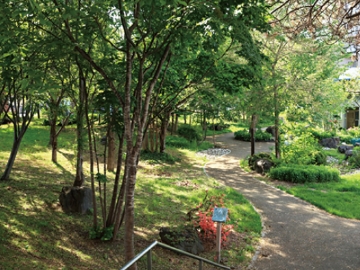
Kairakuen Garden site
Kairakuen Park was created in 1871 (Meiji 4) by the Kaitakushi.
It was located in a plant breeding site, which also had industrial promotional facilities such as an agricultural garden and a temporary museum.
Part of it is now Kairaku Park.
Named after its meaning of “having fun together with the people,” it remains a popular place for locals to relax in.
In the park, Seikatei remains in its original state.
7 Chome Kita 7 Jonishi, Kita Ward, Sapporo Kairakuen Ryokuchi
-
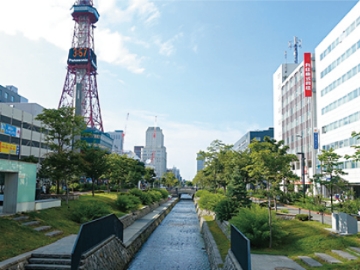
Sosei River
A river approximately 1.4 km long that runs through the city from near Nakajima Park and continues on to Ishikari City.
It is said that the canal, excavated for agricultural and domestic water use, was established by Kametaro Otomo in the late Edo period.
At first, it was named Otomobori (Otomo Canal).
Parks have been developed around the river, exemplifying the beautiful scenery throughout the seasons as places for everyone to relax and enjoy.
Sapporo City Chuo Ward, Kita Ward, Higashi Ward
-
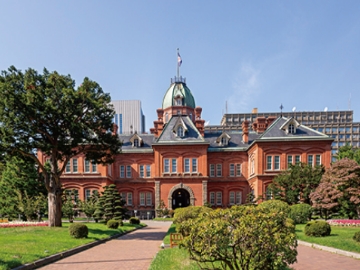
Former Hokkaido Government Office Building (Red Brick Office)
This building, which was constructed in 1888 (Meiji 21), is affectionately known as the “Red Brick Office.”
The construction is inspired by an American Neo-Baroque architectural style, and inside, there are distorted glass panels made in the Meiji era, giving visitors the feeling as if you have slipped back in time.
In addition to learning about the history of Hokkaido, the changing natural beauty throughout the seasons is also a prominent highlight.
Sapporo City Chuo-ku, Kita 2-3 Nishi 5-6.
Viewing hours are from 8:45am to 6:00pm (Closed for renovations until March 2025).
Closed Year-end and New Year’s holidays
-
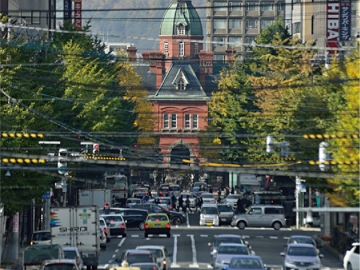
North 3rd Street
This is the first street in Sapporo to be paved with wooden bricks in 1924 (Taisho 13).
32 ginkgo trees were planted the following year, and now they provide a beautiful avenue for people to enjoy as they pass by.
Various events are held throughout the year at the Kita 3-jo Plaza.
Chuo Ward, Kita 2 Jonishi, 4 Chome,Kita 3-jo Plaza
-

Former Sapporo Agricultural College Martial Arts Practice Hall (Clock Tower)
The original building was built in 1878 (Meiji 11) as a facility of the Sapporo Agricultural College based on the vision of Dr. Clark, the first vice principal.
The architecture is characterized by its striking red roof and white walls. The first floor is a large exhibition room where visitors can learn about the history and progress of the building, while the second floor is a hall used for concerts and other events.
The clock on top, which is wound up twice a week, is still in operation and tells the time to all Sapporo locals and visitors alike.
2 Chome Kita 1 Jonishi, Chuo Ward, Sapporo
Visiting hours are from 8:45am to 5:10pm (entry until 5:00pm).
Closed January 1-3
-
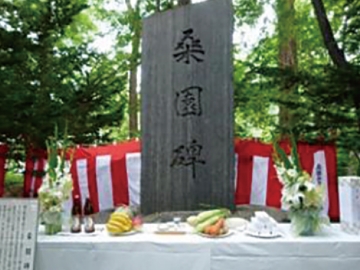
Monument of Soen
In the early Meiji era, the Kaitakushi decided to promote sericulture in Sapporo by designating the area from South 1 to the north and from West 8-chome to the west as mulberry fields.
For this purpose, about 69.42 hectares of land was cultivated and mulberry trees were planted, hence the name “Soen” (mulberry garden).
The “Monument of Soen” stands quietly on the grounds of the Governor’s Residence, surrounded by rich greenery. In addition to the origin of the place name, the monument also bears the history of the Soen district, allowing visitors to reflect on the hard work of their predecessors.
16 Chome Kita 1 Jonishi, Chuo Ward, Sapporo
-
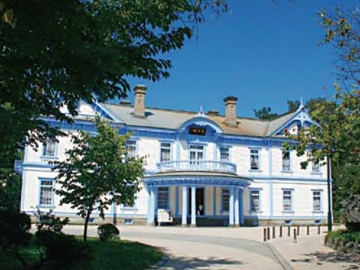
Hoheikan
The Hoheikan, which opened in 1881 (Meiji 14), is the only hotel built by the Meiji government.
The first guest to stay at the Hoheikan was Emperor Meiji, who visited Hokkaido and Sapporo for inspection.
A wooden Western-style building from the early Meiji period, it was first constructed using traditional Japanese techniques and has since been designated as a nationally important cultural property.
In 1958 (Showa 33), it was relocated to its current location and is now utilized as a facility for cultural exchange.
1-20 Nakajimakōen, Chuo Ward, Sapporo
The viewing hours are from 9:00am to 5:00pm (last admission is at 4:30pm).
Closed: 2nd Tuesday of the month (or the following day if it falls on a national holiday), year-end and New Year holidays
-
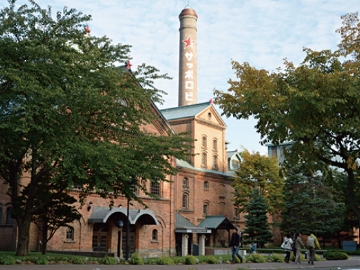
Sapporo Beer Museum
The iconic brick building, designated as a Hokkaido heritage site, is the only beer museum in Japan.
You can learn about the history of Hokkaido’s development and Sapporo Beer at the museum.
Visitors are free to explore the museum on their own, but participating in a premium tour (for a fee) can enhance the appeal of the beer even further.
At the end of the tour, visitors can also enjoy a tasting of limited edition ‘Reproduced Sapporo Beer’ which recreates the taste from the early days of Hokkaido’s development and ‘Sapporo Black Label’ beer.
9-chōme-1-1 Kita 7 Jōhigashi, Higashi Ward, Sapporo,
The viewing hours are from 11:00am to 6:00pm.
Closed: Mondays (or the following day if it falls on a national holiday), year-end and New Year holidays
-
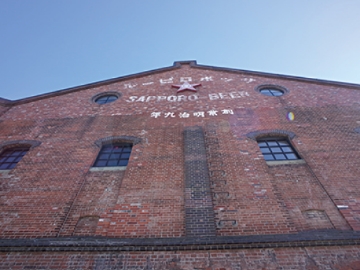
Former Sapporo Beer Factory (Sapporo Factory)
This commercial facility is built on the site of the first beer factory in Japan, the “Kaitakushi Beer Brewery,” which was established in 1876 (Meiji 9) as part of Hokkaido’s development history.
The Atrium, which spans from the basement to the 4th floor, is lined in a circular layout with a variety of shops, including fashion boutiques, home goods stores, restaurants, and many others.
In November, the illumination of a giant Christmas tree and festive music add to the fantastic atmosphere.
4 Chome Kita 2 Johigashi, Chuo Ward, Sapporo
Business hours: Shopping 10:00am – 8:00pm / Restaurant 11:00am – 10:00pm
Closed: No regular holidays
-
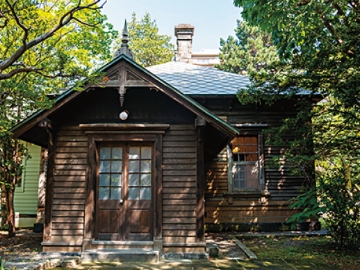
Former Nagayama Takeshiro Residence
The private residence of TakeShiro Nagayama, the second governor of the Hokkaido and was also known as the pioneer of the prefecture’s development.
This residence, which was built around 1880 (Meiji 10), is said to be a forerunner of houses that incorporated Western architectural techniques commonly seen during the pioneering period, with a mixture of Japanese and Western styles connecting a pure Japanese-style study and reception room.
The two-story Western-style building on the north side is distinctive with its white walls and green roof.
6 Chome Kita 2 Johigashi, Chuo Ward, Sapporo
Viewing hours are from 9:00am to 10:00pm
Closed on the second Wednesday of every month (or the following day if it is a national holiday) and during the year-end and New Year holidays.
-
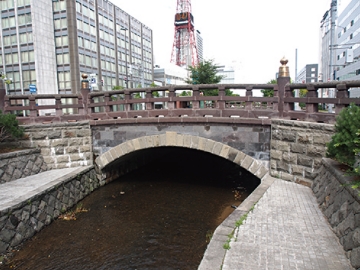
Sosei Bridge
The Sosei Bridge over the Sosei River on South 1st Street is a reconstruction of the original bridge that was built at the time of its construction.
It is said that the base of the bridge became the starting point for the urban area’s block division.
The giboshi, traditional ornaments used to decorate handrails in shrines, temples, and bridges, indicate that this bridge was high-class.
This stone bridge has a very distinctive design, with a pure Japanese-style upper part and an arched lower structure.
Nishi 1-jo to Higashi 1-chome, Chuo-ku, Sapporo City.
-
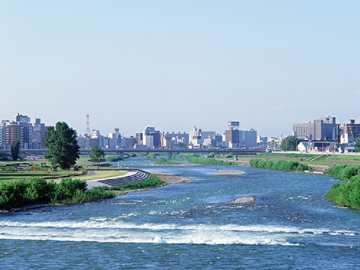
Toyohira River
The Toyohira River, which flows through the center of Sapporo City, is designated as a river of particular importance for the preservation of the national land or for the domestic economy, as it flows from Jozankei in South Ward through the city center and merges into the Ishikari River.
In the fall, you can see salmon swimming upstream.
Events such as fireworks shows are often held in the riverbed. Upstream areas have also been developed with water gardens and playground equipment, as well as cycling paths, tennis courts, and other amenities.
The river is a place of spiritual healing as well as a place for locals to enjoy recreationally.
Sapporo City’s Chuo Ward, Minami Ward, Toyohira Ward, Shiroishi Ward, and Higashi Ward.
Take a break at a café

-
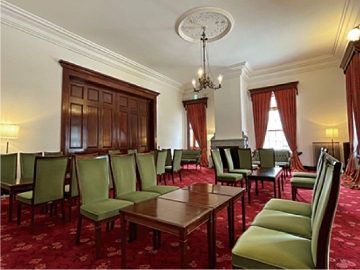

Cafe Harunire (Hoheikan)
1-20 Nakajimakōen, Chuo Ward, Sapporo, Hokkaido 064-0931
The Cafe Harunire is located in the Toyohirakan.
Why not take a break and enjoy some delicious baked sweets and original coffee at this elegant cafe after touring the facility?
Available at the first-floor dining area from 11:00am to 3:00pm.
011-211-1951
-
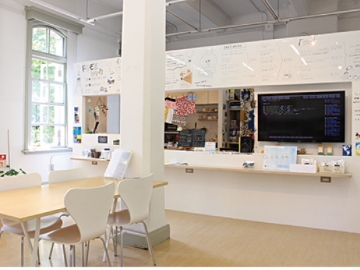

SIAF Lounge (located inside the Former Sapporo Court of Appeals Building )
1F, Sapporo Shiryokan (Former Sapporo Court of Appeal ) 13 Chome Odorinishi, Chuo Ward, Sapporo, Hokkaido
The lounge, located on the first floor of the Former Sapporo Court of Appeal, allows visitors to freely read books and materials related to the Sapporo International Art Festival (SIAF), an event held once every three years that showcases the latest creative works from around the world.
Take a break with a sweet cake and an original coffee blend while visiting the museum!
011-252-9360
-
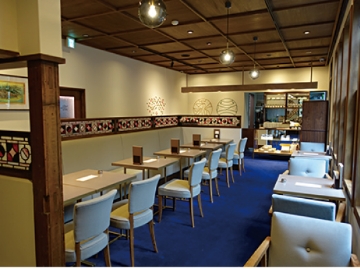

Nagayama Rest (located in the former Nagayama Takeshiro Residence and the former Mitsubishi Mining Company Dormitory)
6 Chome Kita 2 Johigashi, Chuo Ward, Sapporo, Hokkaido
Nagayama Rest is a coffee shop, fashioned in a Western and Japanese eclectic style, just like the former Nagayama Takeshiro Residence.
The cafe offers retro Western-style dishes and Instagram-worthy desserts.Enjoy the history and culture of a bygone era in a space that feels like a time warp into the past!
011-215-1559
Check the website for opening hours.
Recommended sightseeing spots around cultural heritage!
-
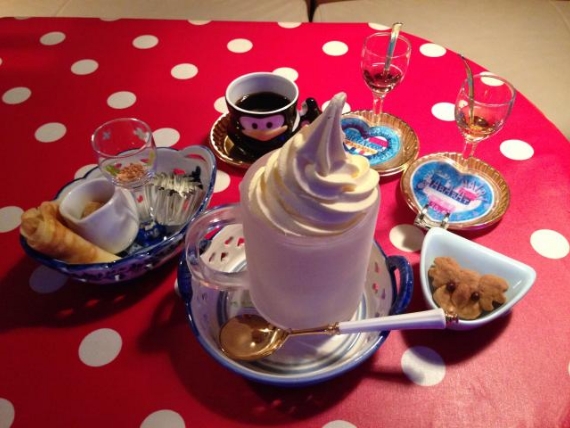
Ice cream Bar hokkaidou milk-mura
Café/Susukino
16F, Minami 4 Jo nishi3Chome 7, Chuo Ward, Sapporo
-

Keyaki (Susukino flagship store)
Gourmet/Susukino
Mutsumi Kaikan 1F, South6 West3, Chuo Ward, Sapporo
-
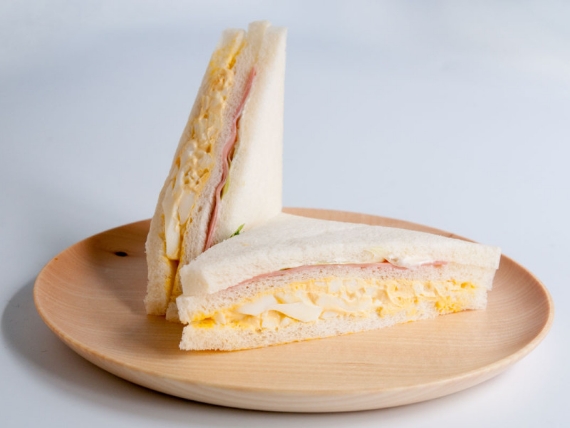
Sandria
Gourmet/Susukino
Sandria is a takeout-only sandwich shop that opened in 1978. They insist on using Hokkaido-produced ingredients, and the sandwiches are filled with ingredients prepared according to recipes dating back to the shop’s inception. Sapporo citizens keep on coming back for the fresh, reasonably-priced sandwiches. It is close to Susukino and conveniently open 24-hours a day. They sell 40 different kinds of sandwiches at any one time, and the most popular is the double-egg sandwich. Their sandwich hors d’oeuvres (reservations required at least 3 days in advance) are popular for events such as birthday parties. You can take their sandwiches out to eat at your hotel or enjoy them picnic-style in Nakajima Park, which is a just a 15-minute walk from the shop. Feel free to drop by anytime.
Minami 8-jo Nishi 9-chome 758-14, Chuo Ward, Sapporo
-
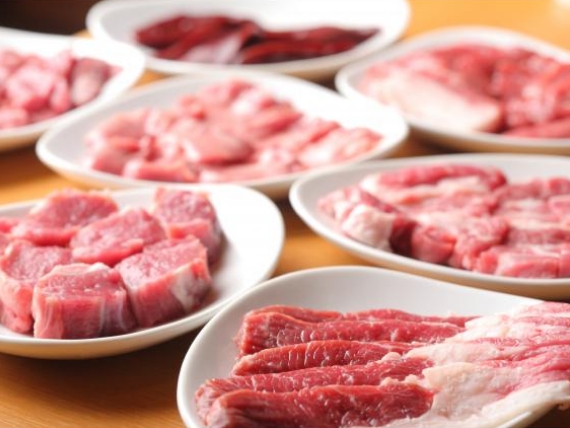
ITADAKIMASU
Gourmet/Susukino
South5 West5-1-6, Chuo Ward, Sapporo
-
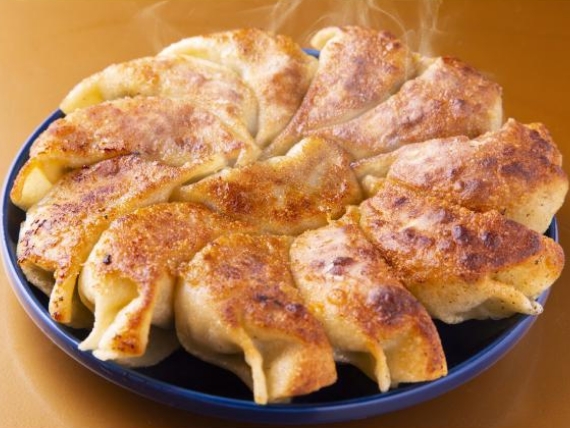
nakayoshi gyoza elizabeth
Gourmet/Susukino
Kuribayashi Bldg. 2F, Minami 4-Jo Nishi, Chuo Ward, Sapporo
-

Sousei River Park
Park/Near the Sosei River
Sousei River Park, which runs along the Souseigawadori, which divides central Sapporo into its eastern and western halves, was completed in 2011. Sousei River was formerly the irrigation channel Otomo-bori, which was made in the Edo era. In the early Showa era, the riverbanks were filled with circus tents and street stalls. The 820-meters-long Sousei River Park, which runs from Minami 8-jo to Kita 1-jo, and its promenade, is a successor to the Otomo-bori. The park also provides stairs so visitors can walk down to the water. The promenade is lined with colorful lilacs and dotted with Eiki Danzuka’s brick artworks, which makes the promenade feel like an outdoor museum. Each section of the promenade differs from the next, so you’ll never get bored. Park staff gives free, guided tours.
Kita 1-Jo ~ Minami 4-Jo, Chuo Ward(Soseigawa-dori), Sapporo
-
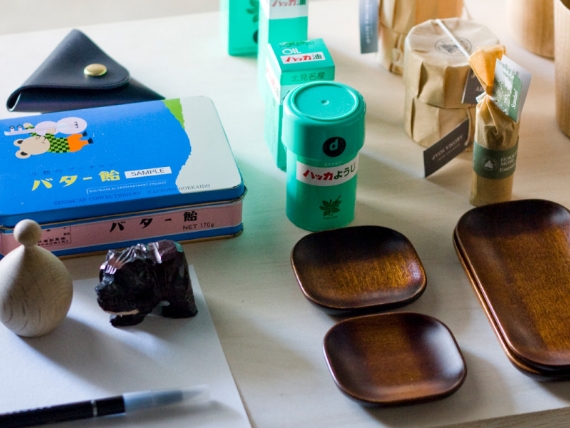
D&DEPARTMENT HOKKAIDO by 3KG
Shop/Nishi 18-chome
Located near the center of Sapporo, D&DEPARTMENT HOKKAIDO by 3KG is a select shop, long loved by the locals, which introduces affordable sundries and furniture from the perspective of “long life”. It is characterized by its focus on traditional crafts and local industries, from areas across Japan, so you can enjoy Japanese manufacturing. “Made in Hokkaido” products, selected from areas such as Sapporo, Asahikawa, Otaru, Hakodate, are recommended as souvenirs. Wooden bowls, etc.
Odori Nishi 17-1-7, Chuo Ward, Sapporo
-
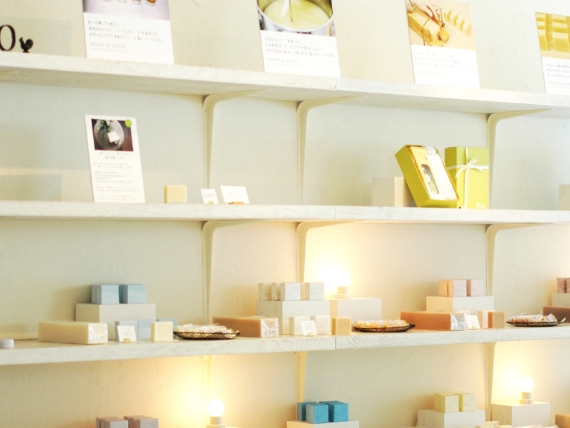
Siesta Labo.
Shop/Nishi 11-chome
Combing a workshop and a shop, Siesta Labo. uses traditional European methods to produce hand-made soaps that make full use of natural ingredients. Using natural ingredients from Hokkaido including Tokachi’s azuki beans, natural salt from the Sea of Okhotsk, Shimokawa-cho’s silver birth, and Furano’s lavender, these soaps can also be used by those with sensitive skin. With the desire to “let customers discover the charm of Hokkaido with soaps”, the owner travels to where the ingredients are first produced and makes sure each production process is transparent. From the windows of the nearby workshop, you may take a look at the interesting ways the soaps are made. We recommend the mini packages as souvenirs for your Hokkaido travel.
Sapporo AS Bldg. 1F, Minami 1-jo Nishi 12-chome 4-182, Chuo Ward, Sapporo
-
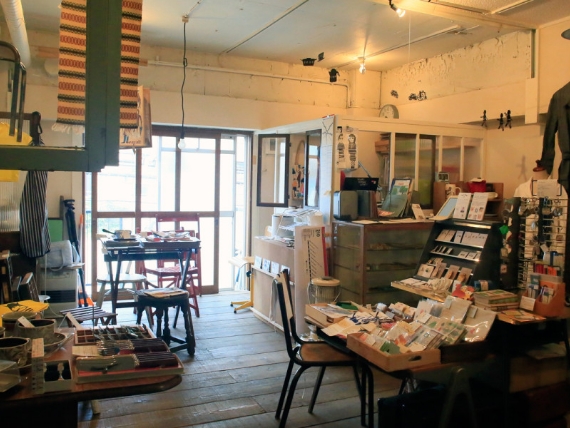
space1-15
Shop/Nishi 11-chome
Space1-15 is a new attraction near central Sapporo where around 20 shops including cafés, sundries, casual wear and artisans’ workshops open only on the weekend. It features a mechanism whereby you enter the facility by pushing an intercom at the entrance of an old apartment. From the second to the fifth floor are unique rooms refurbished in a free style by store owners who are artisans in Sapporo, and you may enjoy visiting the shops room to room. The KITCHEN TOROIKA in 401 opens 12:00–20:00 from Thursday to Sunday and we recommend you push the doorbell of 401 at the entrance and first fill up your stomach before taking a tour of the facility. If you would like to taste something different than that in a department store in Sapporo please visit space 1-15.
Chateau le reve, Minami 1-jo 15-chome 1-139, Sapporo
-
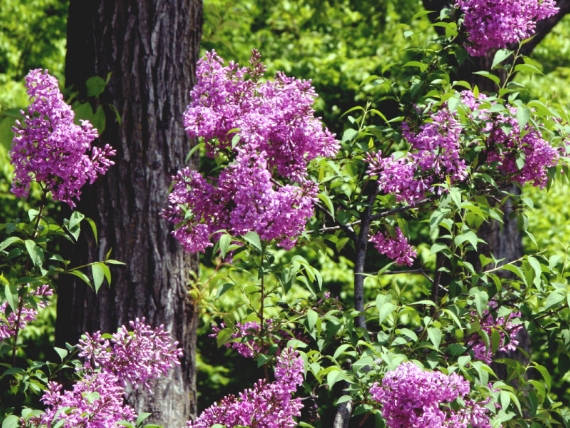
Botanic Garden, Field Science Center for Northern Biosphere, Hokkaido University
Museum/Sapporo Station
Built in 1886, the Field Science Center for Northern Biosphere features the second oldest botanical garden in Japan. Kingo Miyabe, a second-generation student of the Hokkaido Agricultural School, was assigned the design of the botanical garden in 1883. He began traveling in June 1884 to collect native plants and trees, which remain at the Center to this day. The dahurian larch, which he brought back from the Kuril Islands, to where he traveled by boat from Nemuro, is one example. The Center’s Hokkaido Development Commission museum, which is the oldest in Japan, is also a must see. A silent film shot in Asahikawa in 1935 of the Ainu “bear ceremony,” which involves the sendoff of the bear spirit, can be seen in the “Northern Ethnic Reference Room,” which features valuable material on the Ainu people.
Kita 3-jo Nishi 8-chome, Chuo Ward, Sapporo
https://www.sapporo.travel/spot/facility/botanic_garden_or_hokkaido_university/
-
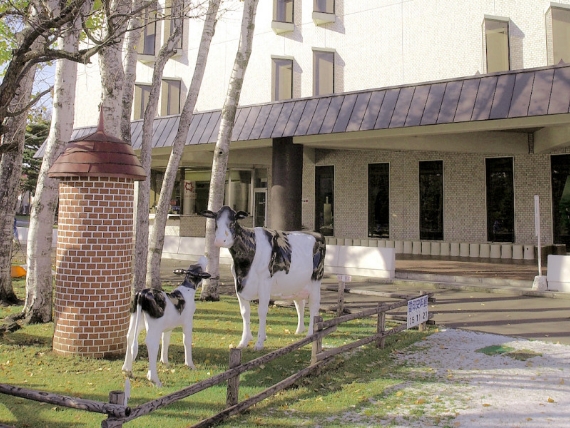
Megmilk Snow Brand Museum
Museum/Naebo
Megmilk Snow Brand is one of Hokkaido’s largest dairy manufacturers. This history museum was opened in 1977 to commemorate the 50th anniversary of Snow Brand Dairy, Megmilk Snow Brand’s antecedent. It exhibits nearly 850 items including dairy manufacturing devices, a 1/30 model of the factory, a butter churner, and manufacturing machine used during the early days of the corporation. Reservations are required for tours through the Sapporo Factory, which visitors can take after seeing the exhibitions of machines used over 50years ago and models of the current factory. The milk and cheese tasting, which takes place after tours, are also popular. It’s great to drink freshly made milk immediately after learning about dairy farming and industry.
Naebocho 6-chome 1-1, Higashi Ward, Sapporo
https://www.sapporo.travel/spot/facility/megmilk_snow_brand_museum/
-
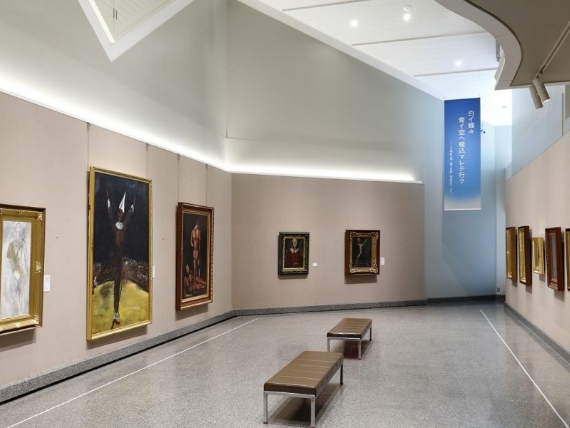
Migishi Kotaro Museum of Art, Hokkaido
Museum/Nishi 18-chome
Sapporo native Kotaro Migishi flew through the history of modern Western style painting in Japan like a comet and passed at the young age of 31. This private museum maintains and exhibits Migishi’s works. When the family of the deceased artist donated 220 works to Hokkaido in 1967, the Hokkaido Prefectural Art Museum (the Kotaro Migishi memorial room) was opened. In 1983, the Migishi Kotaro Museum of Art was opened with a reproduction of his atelier in it at the current location. The exhibitions are primarily focused on the collection pieces, which include his best-known works. Special exhibitions introduce his art from various angles. Additionally, the museum hosts lectures and music concerts.
Kita 2-jo Nishi 15-chome, Chuo Ward, Sapporo
https://www.sapporo.travel/spot/facility/migishi_kotaro_museum_of_art/
-
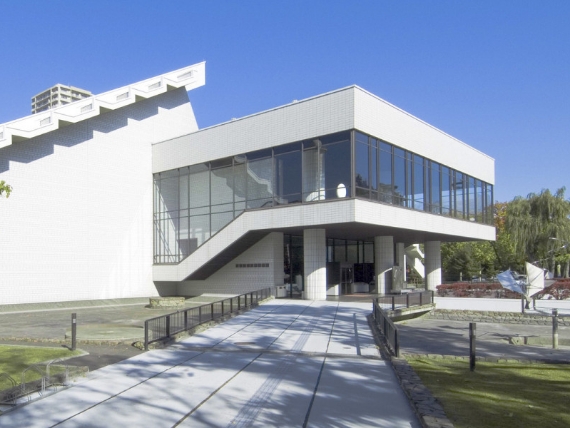
Hokkaido Museum of Modern Art
Museum/Nishi 18-chome
Since opening in 1977, the museum has shown many permanent collection exhibitions, which introduce works from its varied collection according to various themes, and special exhibitions of unique domestic and foreign works. The collection is primarily focused on the works of Hokkaido-associated painters and sculptors such as Tamako Kataoka, Eien Iwahashi, Kinjiro Kida, and Nissho Kanda. It also includes an acclaimed collection of glassworks ranging from the Art Nouveau to modern period. The collection of works by the “School of Paris” painters including Jules Pascin are also not to be missed.
Kita 1-jo Nishi 17-chome, Chuo Ward, Sapporo
https://www.sapporo.travel/spot/facility/museum_of_modern_art/
-
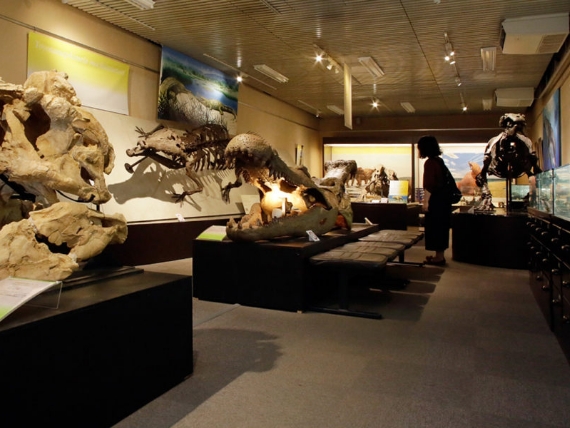
The Hokkaido University Museum
Museum/Near the Hokkaido University
The Hokkaido University Museum is just a 10-minute walk from the North Exit of Sapporo Station and admission is free. Among the buildings on the Hokkaido University campus, the museum exudes a formidable presence and sense of history. Since its completion in 1929 until 1999, the building was used as the main building of the university’s Science Department. The museum’s collection includes over three million documents and specimens, which the university has collected, archived, and researched since it first opened as the Sapporo Agricultural School over 140 years ago. The museum has a number of must-see exhibits, including a huge skeleton of a Holstein bull and a life-sized mock-up of a woolly mammoth. In addition to specimens, the museum exhibits many intriguing instruments as well, such as a seismograph, which will even respond to light footsteps, an interactive exhibit room where you can touch specimens, and the museum laboratory where you can see research taking place. The museum reopened to the public in July 2016 after a major renovation and now features new exhibits highlighting the latest research taking place at Hokkaido University’s 12 academic departments. It has even installed a café that serves light meals and alcoholic beverages.
Kita 10-jo Nishi 8-chome, Kita Ward, Sapporo
https://www.sapporo.travel/spot/facility/hokkaido_university_museum/
- Publishing
- Sapporo City Council for the Promotion of Historical and Cultural Town Development
(The secretariat: Cultural Properties Division, Culture Department, Citizen’s Cultural Bureau, Sapporo City) - 10F Sapporo Clock Tower Building 2-chōme-1 Kita 1 Jōnishi, Chuo Ward, Sapporo,
- TEL 011-211-2312
- March 2021
Agency for Cultural Affairs of the Fiscal Year 2020
Grant for Cultural Resource Utilization Projects (Tourism Base Development Project) funding

